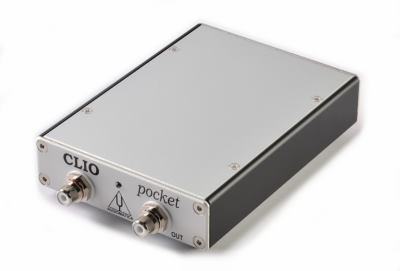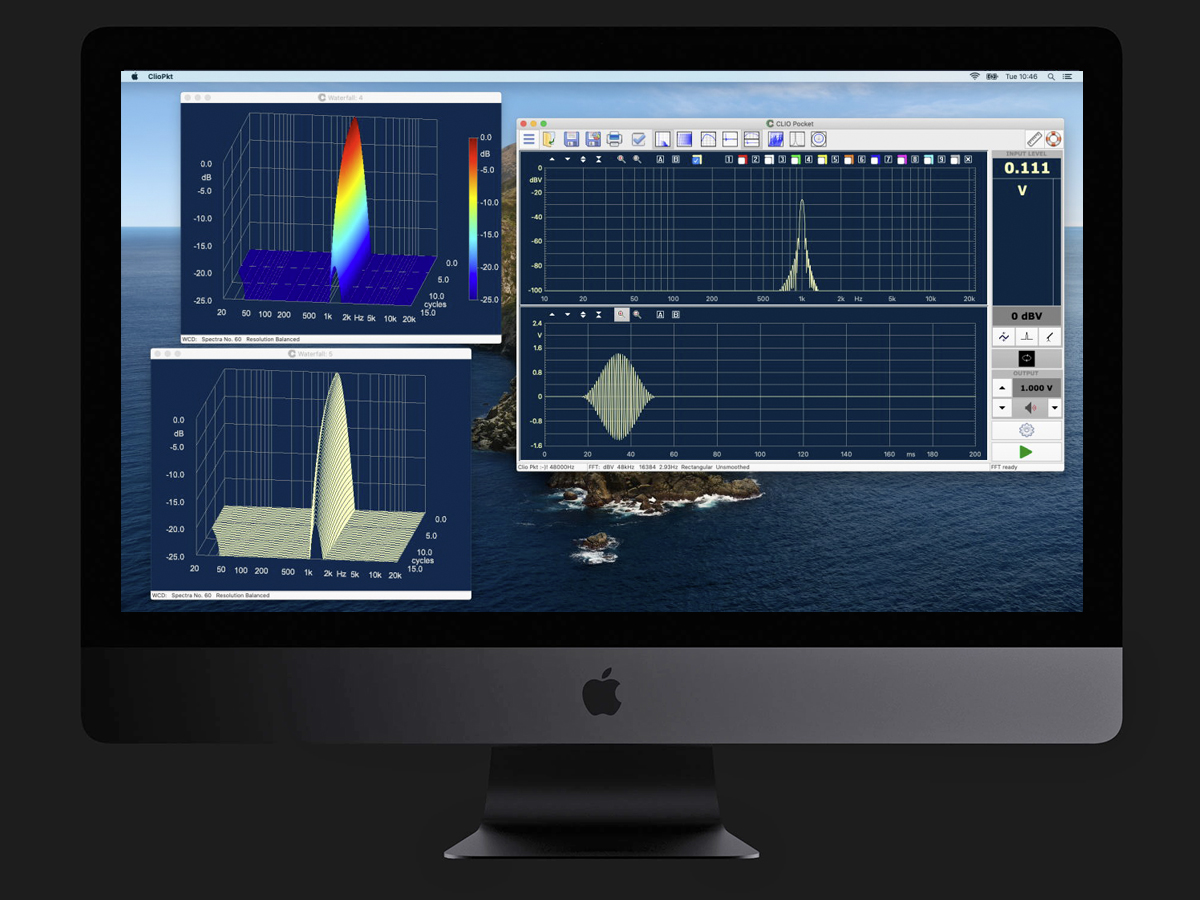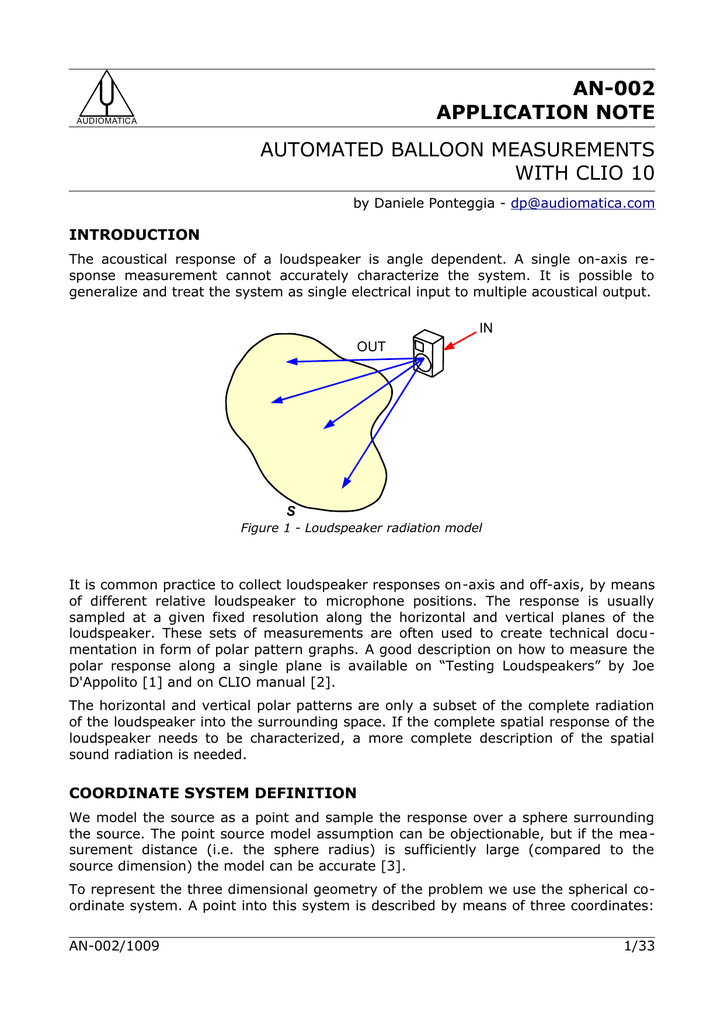TNT Nues
Tower-type, two-way, sealed-box DIY loudspeaker
The CLIO Pocket system includes a plastic carrying case, CP-01 Audio Interface, MIC-02 precision microphone, CLIO Pocket CD with software and drivers, a USB 2.0 cable, microphone cable, and test leads with alligator clips. For easy setup and calibration of the MIC-02 microphone see Audiomatica's MA-01 CLIO Pocket accessory pack. I must express my most sincere thanks to Ciare, expecially to Lino Esposto, for their drivers' availability, and to Florence's Audiomatica for allowing me to utilize the famous Clio PC board. A thank-you also goes to those who allowed for the listening session: Giorgio Pozzoli and Matteo Bresciani. Good work and enjoy. If you want to dig deeper into the science of speaker drivers, take a look this book written by Geoff Hill. This is not a book where you will find practical applications of current commercial loudspeaker transducers, but if you want to understand the fundamental science and physics behind modern drivers, here you'll find a comprehensive. Support Audioengine's support team is standing by to assist you with all your questions.
Producer: not for sale, TNT-Audio DIY project
Drivers: Coral EL 61 (2 woofers), Coral EL 10 (1 tweeter)
Approx. price: 200 $/Euro (basic material)
Author and Designer: Fulvio Marcolin
Published: September 2001
|
Foreword
Now and then audiophiles direct their choice toward the'tower' type of loudspeaker, since it occupies the same area as a bookshelf oneplaced upon its stand, yet with two major advantages: you get rid of an unstable stand, always ready to fall down under the attacks of your pets and children (with all the subsequent personal and real injuries), and you can count on a bigger inner volume that, usually, allows for a better low range performance.
This is the reason TNT's new DIY loudspeaker project is a 'tower', with smalldimensions and easy to build.
The Nues name comes from the ancient Latin word Nubes (Clouds), and from Sardinia's own language, where it is used to mean 'clouds',too; yet, read in an Anglo-Saxon way, it should sound less or more like 'News',to underline it being a project somewhat distant from the 'latest fashion'.
The TNT Nues project is the first TNT DIY design translated into English, for ourinternational readers.
The origin of this name, chosen by our Editor, dates back several years to when it shouldhave been used for a two-way bookshelf design by G. Nicoletti, that, unfortunately, hasnever seen the light due to unpredictable new duties of its designer.
The actual DIY kit follows the usual philosophy of our other kits -easy to build and not too expensive (about 200 $/Euros). It's a two-way, sealed box designsporting two 16 cm woofers and one 1' tweeter, mounted according to the D'Appolitoconfiguration.
Its dimensions are the same of a bookshelf speaker on its stand (cm 105 H x 22 L x 29 W - Base: 35 x 27 cm).

The Design
With the TNT Nues, I wanted the DIYers to discover again the upsand downs of the sealed box design - provided you project a design with a Qtc of about0.7-0.8, this kind of loading grants you a flat or gradually sloping response curve, andyou can also have a better transient response.
The main defect of this kind of design is a frequency response less extended toward thelow end than a bass-reflex one.
Speaking about the woofer, I chose a Coral EL 61: polypropylene membrane, rubbersuspension and steel basket.
Among its parameters, we can see a rather low resonance frequency (42Hz), a pretty highQts (0.75) and a fair coil excursion (3.5mm) - all nominating it for a sealed box loading.
Due to its low sensitivity (85dB), I opted for two paralleled woofers.
My simulations led me to a 45 litre cabinet, completely stuffed withabsorbent, with a Qtc = 0.8 and a frequency response -3dB = 45Hz.
Having two woofers, I preferred a D'Appolito configuration, due to its advantages interms of in-axis response.
Speaking about the tweeter, I chose a Coral EL10. Its resonance frequency is low(900 Hz) and this allows adopting a second-order slope high pass.
For the bass, a good coil serially mounted with the woofer is enough. The scheme shows thex-over ready for biwiring, something I strongly suggest.
Capacitors: 100 V, non-polarized, with polypropilene dielectric.
Coils:
- 2,5m H - 1,5 mm wire gauge - 0,44 ohm - air wounded
- 0.4m H - 1 mm wire gauge - 0.3 ohm - air wounded

Absorbent/damping stuff: roughly 90 litres...
If you use 4cm-thick glass fibre sheets, you will need about 2,5 m2, the samefor acrylic absorbent.
The crossover frequency is at about 1900 Hz. The filter network has a simple structure, thus it should be easy to assemble too.
The loudspeakers' average impedance is about 4 ohm, so, if you have a good (in termsof current delivery) amplifier, you won't have any problem. Any amplifier (even a 20 watter) of sane quality will be able to drive the Nues. Obviously, the bigger the room, the higher the needed power.
Nues' average sensitivity is fair (88,5 dB, average, 1 meter, 2,83V).

The realization
Drivers Automatically Install
For building up the Nues, the usual recommendations apply - lots ofvinylic glue, 19-mm MDF (medium density) boards, and inner treatment with bitumencompound: I personally opt for the one you can 'smear', because it is alsoimpermeable for eventual clefts (you could also try Rockford's Noise Killer - the results shouldbe astonishing).
Being a sealed box, it's mandatory it IS sealed ... there must not be anyloss for openings in the cabinet or due to a bad driver mount: for the latter you have tomake little close-cell polyurethane o-rings (that material is something that you can findin your usual hardware store - it comes in self-adhesive 10-15 meter rolls, from which youcan cut whatever length you need).
Inside the cabinet I placed two little boards to prevent stationary waves.
Considering the cabinet's dimensions, I suggest that, during the gluing, the board betightened with 'vices' (the tools used by wood worker and carpenters... if youdon't want to bear their cost, try and ask if you can borrow them for one day...) for atleast 3 - 4 hours at a temperature not lower than 5°C. I can guarantee that followingthese tips will lead you to several-year lasting glued panels.
Once you have finished the board mounting, you can make the holes to house the drivers, asindicated in the picture.
The crossover components can be glued on the bottom plate, while for the connectors you'redone with 2 or 4 steel screws, depending on your choice of biwiring or not.
Finally, inner volume must be completely filled up with an acoustic absorbent: you couldeither use acrylic absorbent or glass fibre (it's true that the latter is dangerous due toits fibres' high volatility, but, being a sealed-box design, we have no fibre dispersion).
Further upgrades and personalization

Starting from the original design (drivers, dimensions and crossover), the diyer canexperiment some variations - cabinet can be done with hardwood (but it will cause a costincrease), inner cabling could be made using spare threads of the loudspeaker cables youalready use (suggested solution), or with our TNT Triple T, TNT FFRC or theeasier TNT Star.
Moreover, you have wide experimentation freedom with spikes (beneath the loudspeaker) orsoft feet, according to different tastes, to the environment (floor) and to the tonalcharacter of the rest of your system.
I strongly recommend you avoid variations such as driver substitution or crossoverscheme modifications. Doing so, you could have a different loudspeaker, and, however, itwould be a completely blind experiment, about which we could not be able to provide youany kind of information, support or help.
Materials & drivers availability

Drivers Automatically
We've chosen the drivers both for their inherent qualities and for their easyavailability in Italy and abroad. For further info about your nearest dealer,please visit the Coral Electronics website.
Also, you may buy the drivers (sometimes referred as Peerless/Coral) directly online at Audiokit and Digitex (go to Price list, then click on Peerless).
The medium density (MDF) board can be found in any bricolage shop or wood dealer. Passiveelectronic components (capacitors and coils) can be bought in any electronic stuff shop.
Everything else (vinylic glue, nails, etc.) can be found in any hardware/bricolage store.
Software-based (Clio) measurements
Thanks to the help provided by Audiomatica from Florence, Italy, I couldperform some measurement of the TNT Nues loudspeaker. I'm speaking about real measurements,not software simulations.
The first one is the impedance modulus and phase, as classic as the second one, Third-octave in-room frequency response.
Conclusions
Drivers Automatically Update On Windows 10
Avoid as much as possible positioning the loudspeaker near the room'scorners and be patient ... don't think you can plug in the Nues and listen to celestialmusic at once - it takes at least 15 - 20 hours of breaking in. Only after that can you start to experiment, move them around etc.
At the end of this little adventure, I must express my deepestthanks to Coral for havingprovided their drivers, and to Audiomatica in Florence, Italy, for the use of their famous Clio board.
Good work and have fun. We'll wait for your comments, experiences and pics so to publish a kind of 'collective' listening test of our DIY design.
© Copyright 2001 Fulvio Marcolin - www.tnt-audio.com